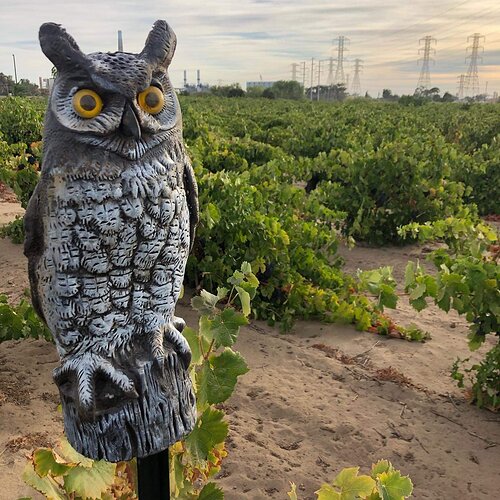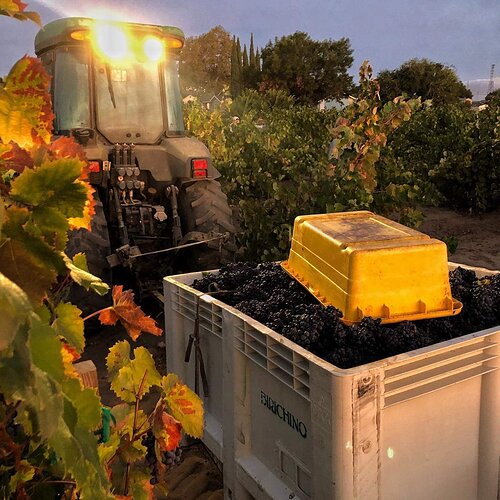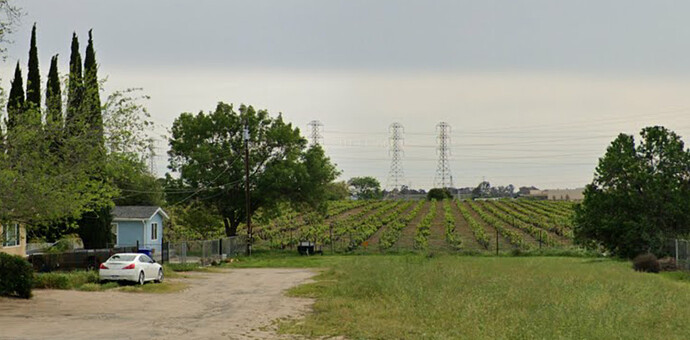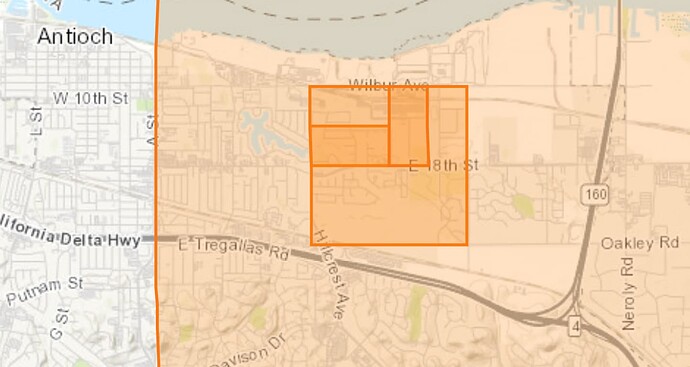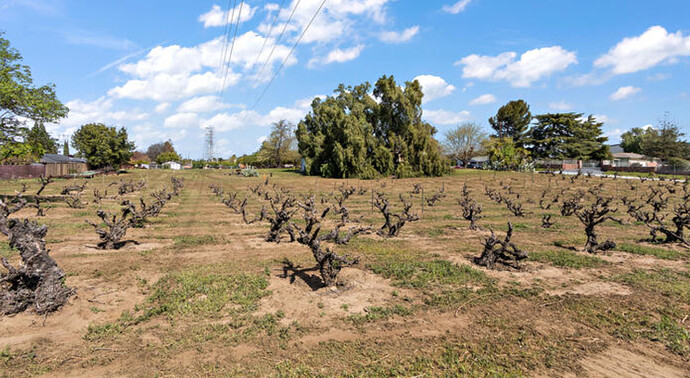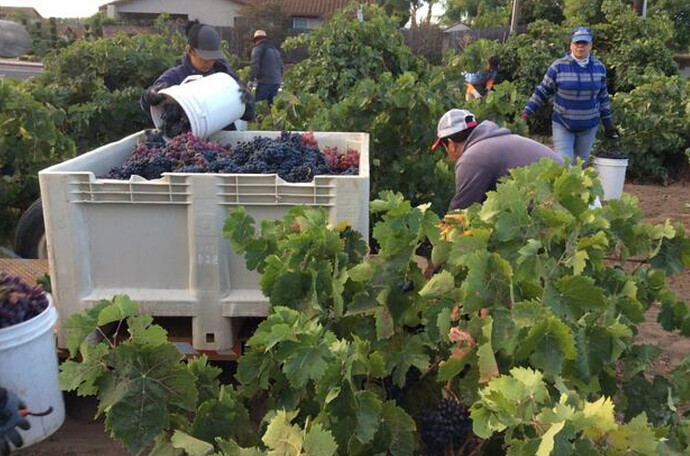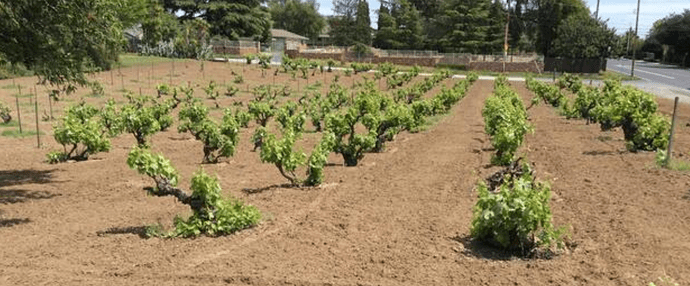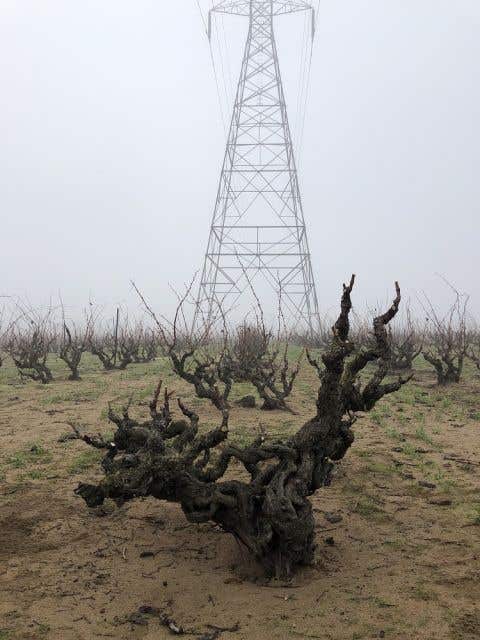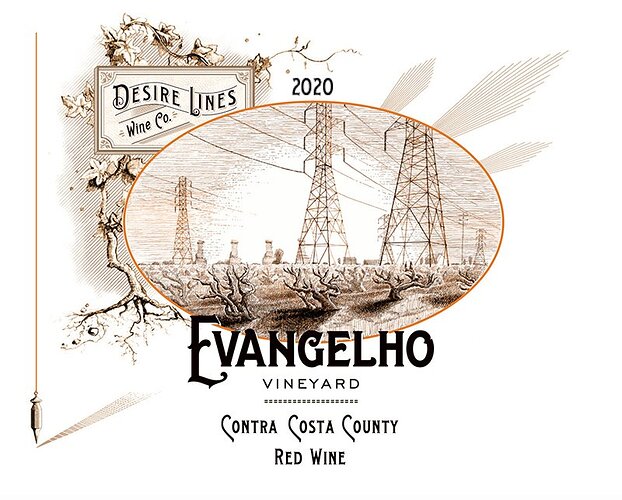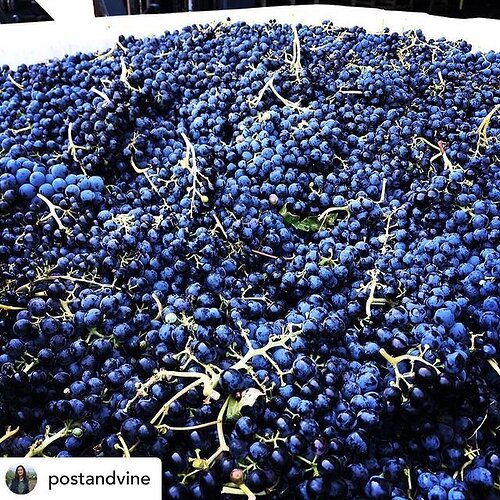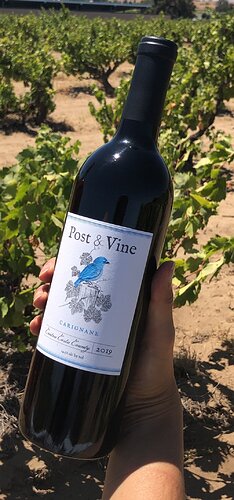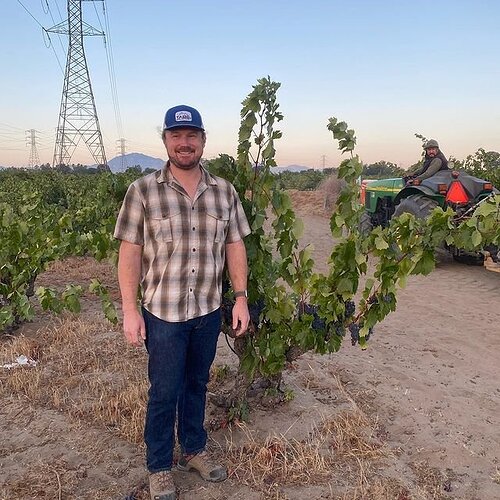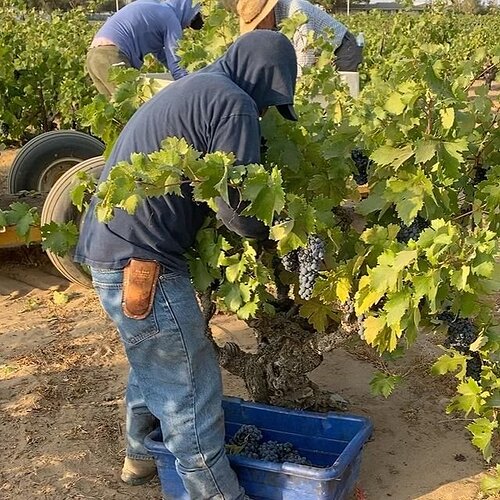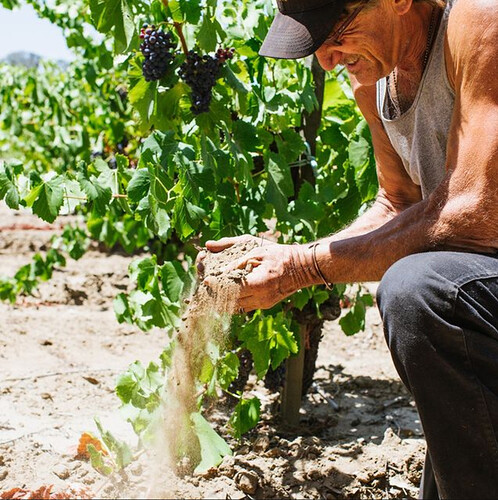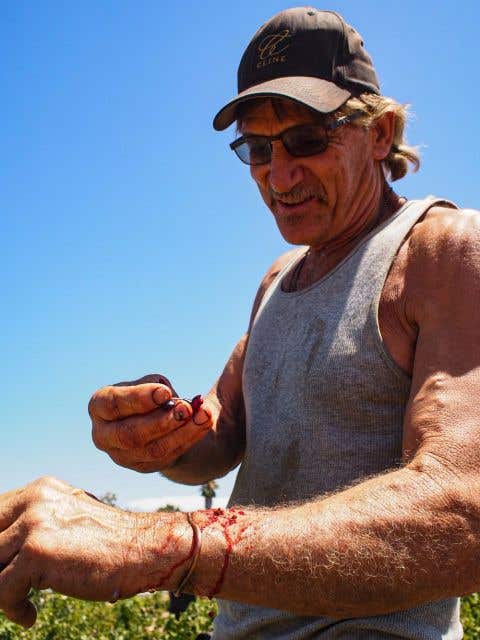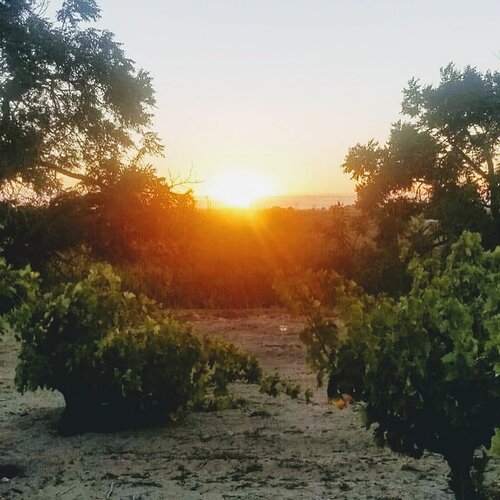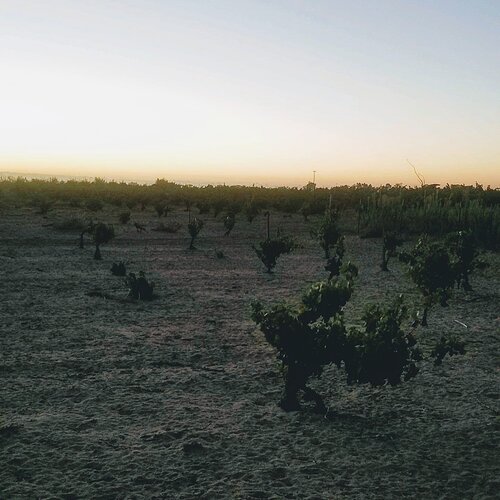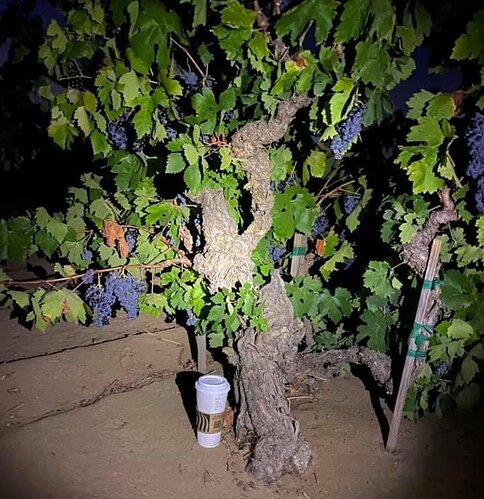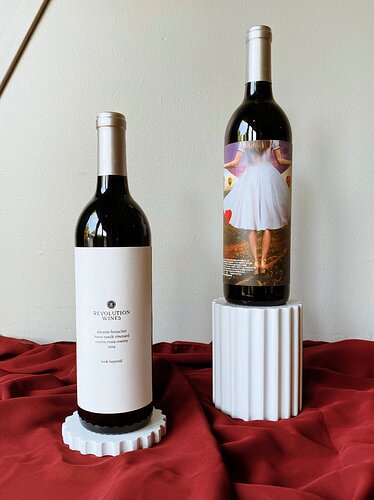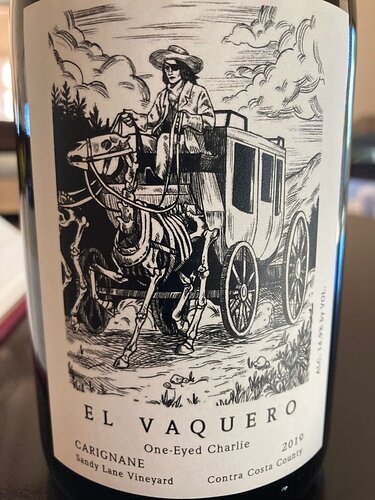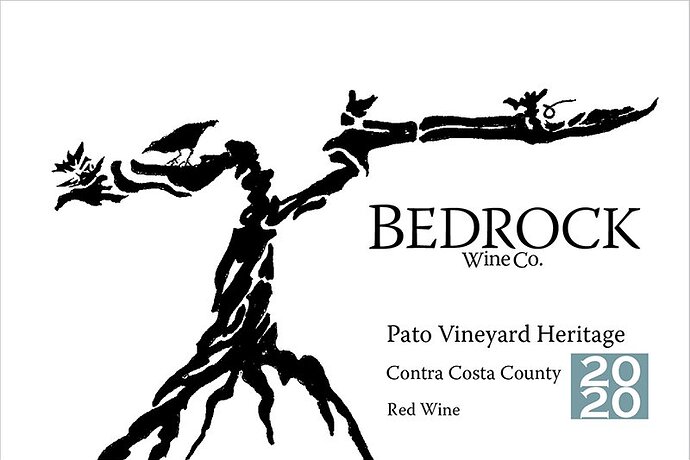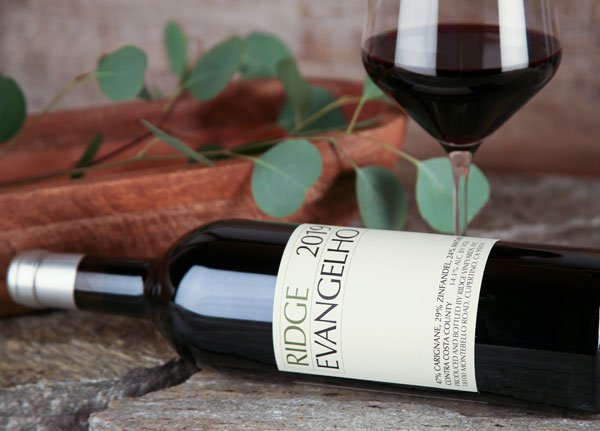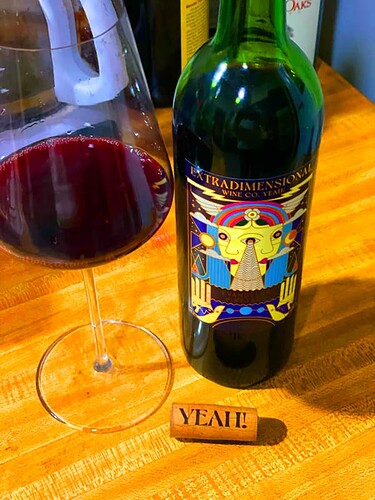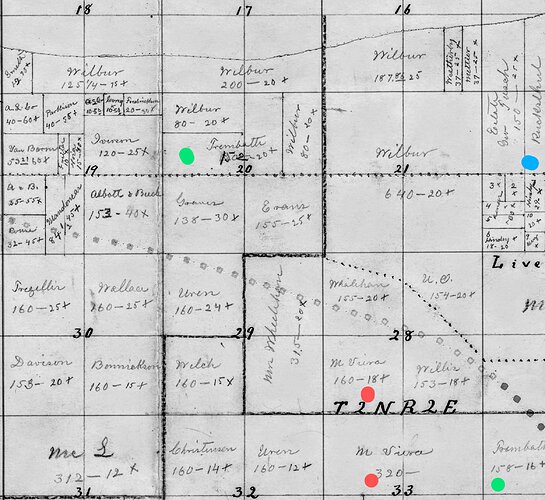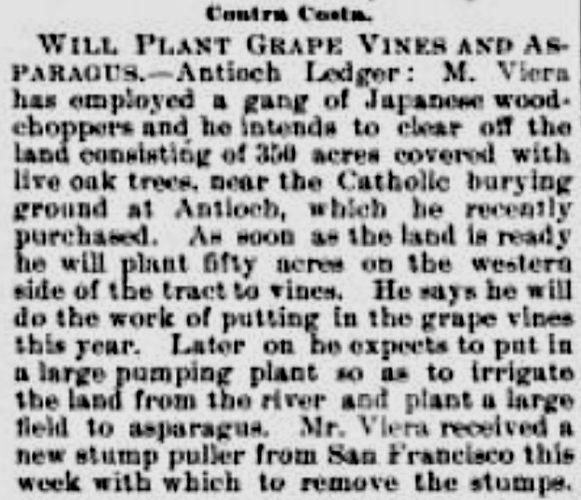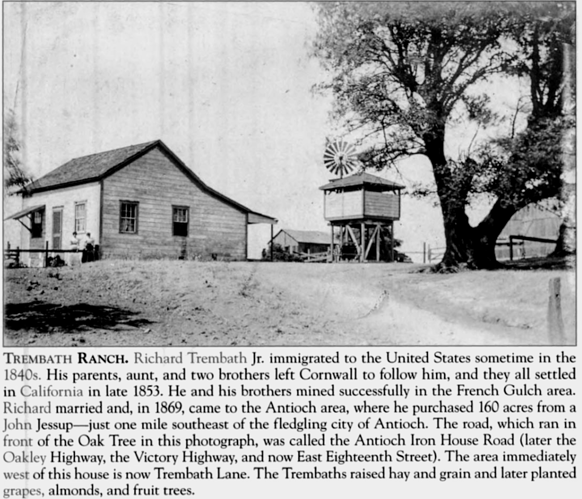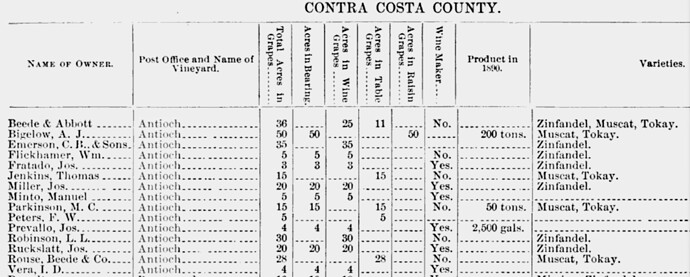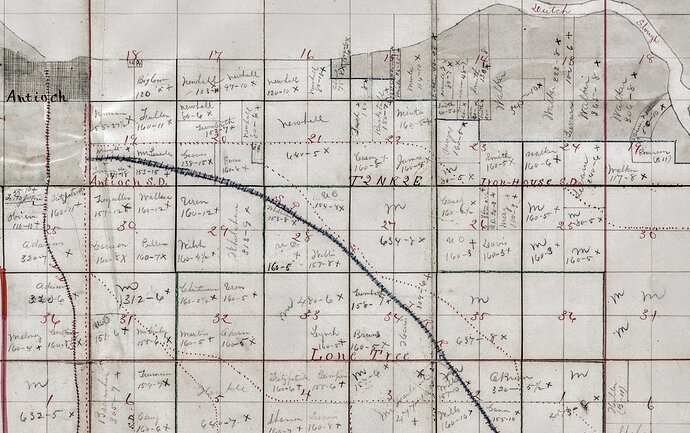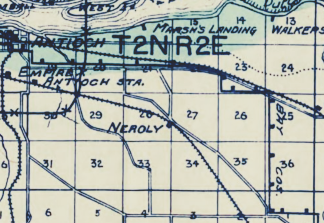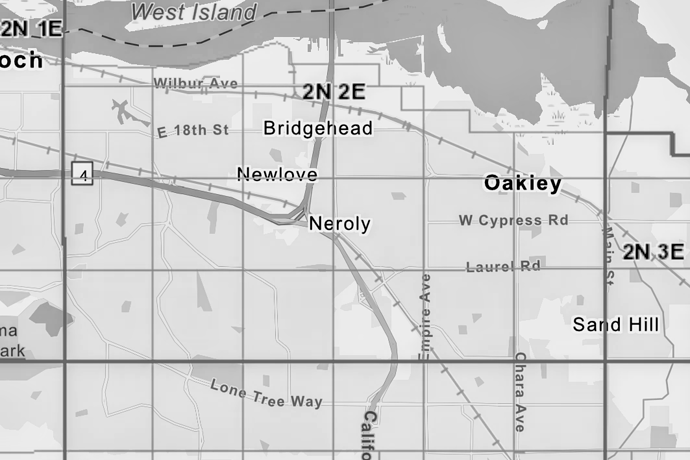PART 2 of 2: From 2015 to 2017, Birichino’s Contra Costa County Mourvèdre wines were from an old-vine, own-rooted planting that included Carignan and Zinfandel. Another ancient CoCo vineyard became the source for Birichino’s Mourvèdre grapes in 2019.
The data sheet for Birichino’s 2017 vintage Mourvèdre states that the former CoCo fruit source is situated in a swale, which allegedly provides vines with a measure of protection from excessive heat.
The 2015-2017 vintages of Birichino’s Contra Costa Mourvèdre may have come from the Gonsalves family’s “Sandy Lane Vineyard” in Oakley, but there isn’t sufficient info available to be sure.
In 2019, Birichino began sourcing Mourvèdre from a small old-vine parcel adjacent to Antioch’s legendary “Evangelho Vineyard”. Photos taken of the vines make this apparent: power lines and smokestacks are found in the immediate background.
Initially, it was a challenge determining whether the “Little Big Block Vineyard” was the same as the Sandy Lanes Poperties/Gonsalves family’s Antioch property (immediately West of “Evangelho Vyd”, as shown in the map at the bottom of this post).
A Google Maps street view does appear to confirm this suspicion. Tall ornamental trees appear in both the street view and one of Birichino’s Facebook photos.
I am now fairly certain the NE Antioch parcel that Birichino harvested grapes from belongs to the Gonsalves family. According to posts on the winery’s Facebook page, this land was planted c.1895. The vines are own-rooted and head-trained.
** EDIT ** Additional Info:
There exists the additional possibility that Birichino is sourcing fruit from two non-contiguous Sandy Lane properties, each North of E 18th Street in Antioch, separated by a PG&E easement and Vineyard Lane.
· “Little Big Block Vineyard”? - map shown at bottom of post
· “Sand Pit / Driving Range Vineyard” - 2901 E 18th Sreet / 1699 Vineyard Lane, Antioch
Point2Homes
Lee & Associates Commercial Real Estate Services
2901 E 18th Street / 1699 Vineyard Lane
Realtor Flyer (PDF download):
2901 E 18th Sreet / 1699 Vineyard Lane
If the “Little Big Block Vineyard” is ~26 acres, and the “Driving Range / Sand Pit Vineyard” is 12 acres, then their locations should be the opposite of what is indicated above.
To further muddle things, a 2020 CoCo Ag document indicates that Dan and Gary Gonsalves each farm different plantings on the Northwest side of Vineyard Drive in Antioch:
· “Big Vineyard / Vineyard Lane” parcel: 26 acres planted
· “Driving Range” parcel: 12 acres planted
History:
100 years ago, the Viera, Trembath, and Bigelow families were early grape-growers in the Antioch and Oakley area. Joseph Ruckstuhl owned a large vineyard in what is now northwest Oakley, to the East of Antioch Bridge.
Image: “Trembath 1874 Parcels”
Note: The Trembath family’s two rectangular land holdings were located to the West of the Viera and Ruckstuhl properties.
The area encompassing the “Evangelho” and “Little Big Block” vineyards might have been planted by the Viera family in the late 1800s. It is certain that the Vieras owned the property when PG&E purchased certain parcels in 1952 to erect power lines.
Manuel Evangelho, father of Frank Evangelho, helped tend the Viera family’s farm for 20 years before purchasing 11 acres of vineland from them. He acquired another portion of the Viera Ranch shortly thereafter when he leased two adjacent parcels from PG&E, bringing the total to 29 acres of vine-bearing land under his care. Manuel farmed the vineyard from 1930s until 1963, passed away sometime after; his wife Mary Evangelho in 2003.
From 1963 until his death in 2018, Manuel’s son Frank helped establish the “Evangelho Vineyard’s” reputation across California. Today, Bedrock Wine Company owns the “Evangelho Vineyard”.
Birichino website:
https://www.birichino.com
